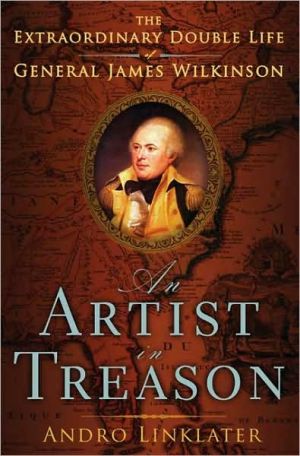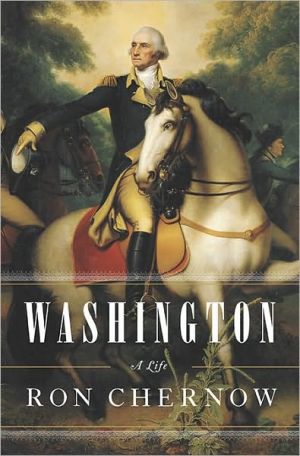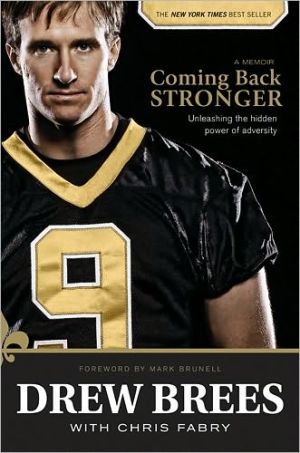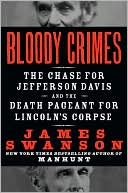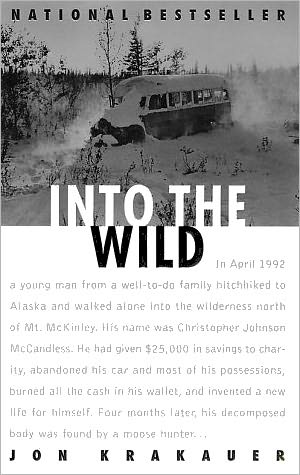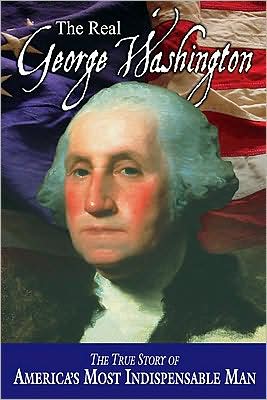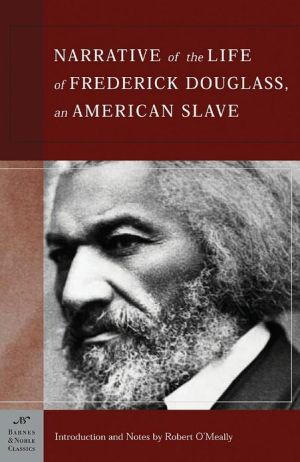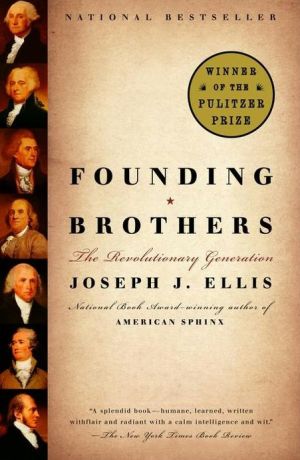An Artist in Treason: The Extraordinary Double Life of General James Wilkinson
For almost sixteen years, from 1795-1811, James Wilkinson was the senior general in the United States army. He was also Agent 13 in the Spanish secret service at a time when Spain's empire dominated North America. Wilkinson's audacious career as a double agent is all the more remarkable because it was an open secret, circulated regularly in newspapers and pamphlets. Indeed, the republic's first four presidents turned a blind eye to his treachery and gambled that the mercurial general would...
Search in google:
For almost sixteen years, from 1795-1811, James Wilkinson was the senior general in the United States army. He was also Agent 13 in the Spanish secret service at a time when Spain's empire dominated North America. Wilkinson's audacious career as a double agent is all the more remarkable because it was an open secret, circulated regularly in newspapers and pamphlets. Indeed, the republic's first four presidents turned a blind eye to his treachery and gambled that the mercurial general would never betray the army itself and use it to overthrow the nascent union-a faith that was ultimately rewarded. Wilkinson's saga illuminates just how fragile and vulnerable the young republic was in its early decades, its survival in no small measure dependent on its unpredictable senior general. The Barnes & Noble Review In my battered copy of Arthur Schlesinger's Almanac of American History, James Wilkinson, commanding general of the United States Army, is introduced, with professorial blandness, simply as the man who, in November 1806, "reveals the Aaron Burr conspiracy to carve out an empire in the American Southwest and Mexico. But in his wonderful novel Burr, Gore Vidal pulls the middle-aged general snorting and belching into the spotlight and sits him down on the other side of the table for the reader to see: "a fat, soft man with loose jowls and a concentrated fierce gaze, rather like that of a sow about to cannibalise her piglets." Wilkinson's once clear voice, Vidal notes, "had grown harsh from drink." He "guzzled port." He wears a fantastically elaborate blue-and-yellow uniform he had designed himself, "calculated to make a Napoleonic marshal look drab as a Jesuit."
An Artist in Treason\ The Extraordinary Double Life of General James Wilkinson \ \ By Andro Linklater \ Walker & Company\ Copyright © 2009 Andro Linklater\ All right reserved.\ ISBN: 978-0-8027-1720-7 \ \ \ Chapter One\ The Penniless Aristocrat \ Excess was bred into him. It showed in his large aspirations, his wild expenditure, his undisciplined behavior, and his gigantic autobiography. In Memoirs of My Own Times, James Wilkinson spread himself across more than two thousand highly colored pages, but, as he confessed to friends, he had still only been able "to glance at one fifth of my public life."\ A tendency to grandiose living was habitual in the society into which he was born on March 24, 1757, the colonial aristocracy of Mary land planters. His grandfather Joseph Wilkinson, a tobacco merchant from En gland, had arrived in the province in the early years of the eighteenth century. This was the era when Europeans suddenly realized that the great landmass of British America contained uncountable acres that could be surveyed and converted into property. Anyone with enough money to pay his passage might hope to own an estate that would have made him a squire or a petty lord in Europe. The result was a growing flood of immigrants, especially to the middle colonies of Mary land, Pennsylvania, and northern Virginia, that threatened to engulf the proprietorial rights of the great families, the Calverts, the Penns, and the Fairfaxes, who had overall possession of the land.\ A sharp divide soon opened up between the established settlements near the coasts and rivers, where the ground was already measured out by the proprietors for sale or rent, and the interior where the poorer immigrants settled, often squatting rent-free on territory beyond the proprietors' control. Banditti was the word commonly used to describe these savage incomers, mostly Presbyterian Scots-Irish from Ulster and Germans from the Palatine state in the Rhine valley, who occupied the land as though it were their own. William Byrd of Virginia compared them to "the Goths and Vandals of old," while in Pennsylvania James Logan, in charge of the Penn family's affairs, complained of the disrespect "these bold and indigent strangers" showed for eighteenth- century conventions, "saying as their excuse when challenged for titles [to property], that we had solicited for colonists and they had come accordingly."\ Joseph Wilkinson had money enough to buy a plantation of almost nine hundred acres in Calvert County, a thumb of coastal land bordered on the east by Chesapeake Bay and on the west and south by the slow waters of the Patuxent River as it broadened into the bay. The location ensured that his family would grow up with values quite distinct from the egalitarian and rebellious impulses of those farther west.\ The Calverts, who owned Mary land, maintained better control than their neighbors the Penns. As early as 1718, the assembly, under presure from Charles Calvert, the earl of Baltimore and "Absolute Lord and Proprietary of this Province of Mary land," passed legislation requiring each county to employ a team of nine public surveyors to parcel out the land. The best of it was sold in large units, as much as ten thousand acres to the nobly born or well moneyed, but a hundred acres of indifferent soil were available free to a single individual who paid his or her own passage or worked for a number of years as an indentured servant. Although frequently breached, this plan proved surprisingly effective as social engineering and helped bring about the growth of a society with class distinctions as well-defined as in aristocratic England.\ "The Manners of Mary land are somewhat peculiar," a bemused John Adams observed in 1777 when he visited for the first time. "They have but few Merchants ... The Lands are cultivated, and all Sorts of Trades are exercised by Negroes, or by transported Convicts, which has occasioned the Planters and Farmers to assume the Title of Gentlemen, and they hold their Negroes and Convicts, that is all labouring People and Tradesmen, in such Contempt, that they think themselves a distinct order of Beings. Hence they never will suffer their Sons to labour or learn any Trade, but they bring them up in Idleness or, what is worse, in Horse Racing, Cock fighting, and Card Playing."\ This was an exaggeration—the rapidly growing port of Baltimore had many merchants, and industrial enterprises such as the giant water mills erected by the Ellicott brothers on the Patapsco River in the 1760s were creating a middle class. Nevertheless, the structure of colonial Mary land did remain remarkably feudal right up to the Revolution. To a New England lawyer such as Adams, it could only appear alien, but to James Wilkinson, who grew up in it, hierarchy appeared not only natural, but the proper way for society to be organized.\ Stoakley Manor, the Wilkinsons' plantation, lay beside a meandering river called Hunting Creek, about four miles north of Prince Frederick, the present county capital. Other properties in Calvert County were more than three times its size, but Stoakley was large enough to justify the family's belief that they belonged to the distinct order of gentlemen. They were related to the Mackalls, the richest family in the county, and Joseph Wilkinson's son, another Joseph, married Althea Heighe, whose siblings and cousins owned seven or eight other plantations. It must have seemed a good match at the time. The young Joseph had inherited Stoakley in 1734 on the death of his father, and Althea, generally known as Betty, had 150 acres of her own, as well as "one feather bed and furniture" left to her by her wealthy father.\ Although some of the land was devoted to wheat and other crops, tobacco underpinned Mary land's economy, and to such an extent that until 1733 when paper money was introduced, tobacco leaf was an official currency alongside silver dollars and gold sovereigns, even for such payments as rents, taxes, and fines. Throughout the 1730s, the international demand for it rose, so that within a decade prices doubled. For a time, all tobacco planters prospered, the Wilkinsons among them. But shortly before young Joseph married Betty Heighe and took over the running of Stoakley, the boom began to tail away. By the time that their son James was born in 1757, the youngest of four children, the family was in debt, and the plantation heavily mortgaged.\ Any one of several difficulties could have overwhelmed an inexperienced young planter. From the 1740s, Mary land's producers had to accept increasingly complex bureaucratic controls introduced by the assembly to improve the quality of the province's tobaccco. Their French customers caused a sharp fall in prices by manipulating the market, while Dutch merchants abruptly changed fashion from the bright- flavored tobacco known as Sweetscented to the heavier Oronoco leaf. But in the long term, the most crucial decision facing every tobacco planter during this period was whether to rely on Europe an convicts and indentured servants for labor or to switch to the new fashion for African slaves. Perhaps Joseph Wilkinson had scruples about using slaves or perhaps he overstretched himself financially in buying them at thirty-five pounds sterling (approximately $175) a head; perhaps he had been brought up as an idle gentleman with no head for business, or perhaps he had gambled and lost heavily on cockfighting or cardplaying. No record of bankruptcy exists, but the estate was broken up and sold soon after Joseph's premature death in 1764 at the age of thirty-three.\ James Wilkinson was just six years old when Joseph died. Into his absence, the son projected the picture of the ideal gentleman, and of the way he should behave under duress. "The last words my father spoke to me," Wilkinson declared, "were 'My son, if you ever put up with an insult, I will disinherit you.'" Whether the dying Joseph actually uttered such baleful words is questionable— as the younger son, James was not the heir— but the idea they expressed was branded deep into his son's personality. In adult life, the merest hint that Wilkinson had not behaved properly would be met with an explosion of anger and, frequently, a challenge to settle the matter with sword or pistol. His violent reaction, almost hysterical at times, must have had its roots in the psychological pressure of seeing his father ground down by debt.\ In the absence of banks, Mary land planters borrowed from each other—Stoakley's broad acres ended up in the hands of three of Calvert County's most prominent families. Thus the creditors Joseph Wilkinson was staving off would have been his friends. Among the excuses he must have offered them, the deceits he must have practiced, and the slow, corrosive experience of letting down those who had trusted him most, the one thing he evidently clung to, the single asset that no one could take from him, was his standing as a gentleman. In his son's Memoirs, the references to his father suggest a man grown almost pathologically touchy about his social standing. The value was passed on intact to his son, who would in his turn always believe that the image of respectability excused the reality of betrayal.\ Nevertheless, Joseph Wilkinson's faith in the social advantages of being a gentleman had some justification. Although the plantation had to be sold to meet his debts, his creditors showed forebearance. His widow, Betty, was allowed to keep the Heighe land she had inherited, and some acres of Stoakley. It was not much, but in time the property gave her elder son, Joseph Wilkinson III, sufficient standing to marry Barbara Mackall. By 1783 Barbara's inheritance from her wealthy father had allowed her husband to become the owner of almost six hundred acres and a gristmill. The two Wilkinson daughters, Elizabeth and Mary, also survived, each marrying a local farmer and raising a family. It was the youngest child, the impressionable James, who found it hardest to recover from the catastrophe.\ As was normal for young men of his class, he was educated by a private tutor, at the expense of his grandmother Mrs. Elizabeth Heighe. Apart from his brother, he was brought up in a house hold of adoring women whom he clearly learned to charm with his liveliness and energy. What must have been especially delightful to adults was his quick intelligence. His teacher, David Hunter, had the distinction of being a graduate from the highly regarded University of Glasgow in Scotland. Wilkinson's first Spanish handlers noted that he had had "a very good education," and the Latin tags and classical references that decorated his conversation, as well as the high-flown rhetorical flourishes used to disguise his true intentions, were proof of how well he had been grounded in the eighteenth-century curriculum of the classics, English literature, grammar, and rhetoric. But more far-reaching were the lessons Wilkinson learned from friends of his age. These were the sons of Mary land planters who could look forward to inheriting a plantation and the privileges that went with it. They taught each other the niceties of social distinction and etiquette and largely ignored the knowledge of their social inferiors.\ Aged thirteen the boy was sent with several others, including his brother, Joseph, and John Custis, George Washington's stepson, to Baltimore, seventy miles away, to be inoculated against smallpox, an expensive precaution that was, he explained, restricted to "young gentlemen from the Southern provinces." The procedure required some pus from a smallpox victim to be rubbed into an open cut, usually made in the hand of the patient, creating a small, localized infection sufficient to create immunity. It was dangerous enough to kill one or two patients in every hundred, and Dr. Stevenson, the Irish doctor who treated Wilkinson, strictly forbade his patients to exercise for fear of spreading the infection through the blood more quickly than the body could cope with it.\ With the easy disdain of his class, Wilkinson recalled, "I paid little respect to the prescribed regimen, and although my physician frequently attempted to alarm me by exclaiming, 'Young gentleman, by Jasus, you will be peppered,' I escaped with slight eruptive fever and was marked by a single pustule."\ What made it impossible to lie still was the stimulation of urban life. With just 564 houses located inside its nominal limits in 1774, Baltimore was hardly a metropolis, but Wilkinson was entranced by its "bustle and excitement" compared to the isolation of a plantation life. "I thought myself transported to another region," he recalled, "[by the crowds] of men, women and children, the wagons, drays, carts, dogs and horses, and the numerous tawdry signs swinging over the street."\ Serving the great wheat fields of northern Mary land and southern Pennsylvania, Baltimore's port was already close to displacing Philadelphia for shipping grain and flour to Europe, and becoming the center for the tobacco trade. Most of the buildings were wooden, many still rough-hewn by ax, and the streets were beaten earth, but a brick-built court house and marketplace had been constructed alongside stone-built wharves and warehouses. The population, estimated at about thirteen thousand, had long overspilled the city boundaries. To a country boy, however aristocratic his background, the broad horizons it offered were irresistible. "Thus were the bonds of local attachment rent," he recorded in his fifties, but it was not just Baltimore that seduced him. He was developing an appetite for excitement.\ Elizabeth Heighe's charity made itself felt once more when Wilkinson was sixteen, and he was sent to study at the medical school in Philadelphia. The Heighes had a high respect for medicine, and a few years later Wilkinson's young cousin James Heighe Blake, another landless young aristocrat, would also become a medical student in Philadelphia. Having qualified as a doctor, Blake's high reputation led in time to his election as mayor of Washington, where he founded the city's first school and its public health ser vice. Wilkinson was never likely to follow that path. He enjoyed the idea of being a doctor more than the reality.\ What weighed most heavily with him was the attraction of studying in Philadelphia. If Baltimore was another region, the City of Brotherly Love was a different universe. In 1774, it was the largest city in British America, with a population of forty thousand, paved streets, a university, a hospital, theaters, such public amenities as a library and firefighting ser vice, and the sort of polite society where a young man short on money but long on charm could hope to flourish. This was where he began his real education, in which "I sought by imitating the best examples to acquire gracefulness of address and ease of manners." Girls were his motivation or, in the elaborate language he used when dressing up the naked truth, "These inclinations were seconded by my solicitude to merit the acquaintance of the most accomplished and respectable of the fair sex, whose ages corresponded with my own." His formal education took second place.\ Philadelphia's medical curriculum covered anatomy and surgery, the supporting sciences of chemistry, botany, and pharmacy, as well as the critically important field known as materia medica, which included diagnosis of ills and prescription of cures. Students were expected to take three years to graduate, but Wilkinson had the added advantage of staying with an elderly relative, John Bond, who was an experienced doctor. Many eighteenth-century students learned their trade by serving as apprentices to qualified physicians, and Wilkinson undoubtedly picked up some additional skills from his host. In April 1775, after less than two years' study, he impatiently decided he was qualified to practice medicine.\ He set up his practice in the distant settlement of Monocacy, Mary land, about forty miles west of Baltimore. It had been settled for barely a generation, and mostly by Germans, whose language Wilkinson did not speak. Aged seventeen, only partially trained and short of money, he was probably unable to find a more desirable area, but the drab routine of administering pills to inarticulate farmers and taking their blood was hardly likely to appeal to someone who had devoted so much energy to getting ahead in Philadelphia's high society. Before the summer was over, he had discovered a new, more exciting vocation.\ (Continues...)\ \ \ \ \ Excerpted from An Artist in Treason by Andro Linklater Copyright © 2009 by Andro Linklater. Excerpted by permission of Walker & Company. All rights reserved. No part of this excerpt may be reproduced or reprinted without permission in writing from the publisher.\ Excerpts are provided by Dial-A-Book Inc. solely for the personal use of visitors to this web site. \ \
MapsEast of the Mississippi River viiWest of the Mississippi River ViiiIntroduction: A Test of Loyalty 11 The Penniless Aristocrat 72 Citizens and Soldiers 153 Wooing General Gates 244 The Triumph of Saratoga 335 Betraying General Gates 446 Love and Independence 607 The Kentucky Pioneer 718 Spanish Temptation 819 Cash and Conspiracy 9310 Enshackled by Debt 10311 A General Again 11312 Discipline and Deceit 12413 Poisoned Victory 13414 The Battle for Command 14015 Death of a Rival 14816 The New Commander in Chief 16317 Ellicott's Discovery 17718 The Federalist Favorite 18219 Jefferson's General 18820 Agent 13 Reborn 20221 Burr's Ambition 21422 Betrayer Betrayed 22523 The General at Bay 23824 His Country's Savior 24725 The General Redeemed 25626 Two Traitors on Trial 26427 The War with Randolph 27628 Madison's Accusations 28929 The Last Battle 30130 The Changing of the Guard 312Acknowledgments 329Appendix 1 331Appendix 2 333Notes 335Bibliography 367Index 377
\ Publishers WeeklyAnyone with a taste for charming, talented, complex, troubled, duplicitous and needy historical figures will savor this book. A Revolutionary War general at age 20, James Wilkinson (1757–1825), whom few now have heard of, knew everyone of consequence in the early nation, from Washington on down. But he squandered his gifts in repeated and apparently uncontrollable double dealing, betrayals (he spied for Spain), conspiracies and dishonesty in the decades following the war. Wilkinson seemed to pop up everywhere, always trying to make a deal and feather his nest. To those ends, he would as soon turn on those whom he had pledged to help as be traitor to the army he served. The only man he remained true to was Jefferson, who in the end spurned him. No one trusted him, as no one should have. Linklater (Measuring America) skillfully captures this sociopathic rogue who, for all his defects, still commands attention from everyone trying to understand the 50 years after 1775. His charisma reaches across two centuries to perplex and fascinate any reader of this fast-paced and fully researched work. 16 pages of b&w illus., 2 maps.(Oct.)\ \ \ \ \ Library JournalThe Scottish-born Linklater (Measuring America) presents an intricate but accessible biography of James Wilkinson, one of the more enigmatic, controversial, and polarizing figures in early American history. Relying heavily on primary sources, especially Wilkinson's published memoirs and unpublished correspondence, Linklater reveals how and why this ambitious and talented young Continental Army general became a spy for the Spanish Empire and collaborated on a western separatist movement with Aaron Burr, whom he eventually betrayed by revealing Burr's plans. The author repeatedly compares Wilkinson's written defenses of his actions with documentary evidence of treason, convincingly arguing that Wilkinson, as described by one of his many enemies, had a "habitual distaste for honesty" but possessed the charisma, cunning, and intelligence needed to live a double life that fooled America's first four presidents. Wilkinson frequently put America at risk by revealing military strategies and secrets to his Spanish handlers, but, as Linklater shows, his duplicity ultimately failed to deter the growth of a fragile young nation. VERDICT This fascinating and richly detailed book is a useful resource for studying America's early struggles with internal interference and external opposition. A fine choice for undergraduates and informed lay readers.—Douglas King, Univ. of South Carolina Lib., Columbia\ \ \ Kirkus ReviewsIn-depth portrait of the treasonous General James Wilkinson (1757-1825). The historian Frederick Jackson Turner called Wilkinson "the most consummate artist in treason the nation has ever possessed," and historian Linklater (The Fabric of America: How Our Borders and Boundaries Shaped the Country and Forged Our National Identity, 2007, etc.) builds a strong case that he deserved that title. Wilkinson had an impressive military career. He fought in the battle of Saratoga during the Revolutionary War, led troops during the War of 1812 and was appointed governor of the newly organized Louisiana Territory by President Thomas Jefferson. But throughout his life, rumors abounded that he was a spy for the Spanish. Four different presidents were informed of Wilkinson's close Spanish contacts in New Orleans and Madrid, and four official inquiries were made to investigate accusations against him, but Wilkinson was repeatedly cleared of all charges. Later, he was accused of collaborating with Aaron Burr on a plot to create an independent nation in the West; he was court-martialed and cleared again. It wasn't until decades after his death-when historians uncovered hundreds of documents detailing Wilkinson's correspondence with and payment by Spanish handlers-that the extent of his betrayal was revealed. Linklater paints a colorful portrait of Wilkinson as an extraordinarily careful individual who frequently communicated with his Spanish contacts via codes and ciphers, and laundered payments through real-estate deals. But his motives for treason may have been more complex than mere monetary gain. Wilkinson, the author argues, also had a selfish and insatiable hunger for information and intelligence,and "possessed an exceptionally well-informed, clear-eyed view of the rapidly changing era in which he lived, and of the advantages to be wrung from it."A well-wrought study of far-reaching treachery in the early years of the United States. Author appearances in Philadelphia, New York, Washington, D.C.\ \ \ \ \ The Barnes & Noble ReviewIn my battered copy of Arthur Schlesinger's Almanac of American History, James Wilkinson, commanding general of the United States Army, is introduced, with professorial blandness, simply as the man who, in November 1806, "reveals the Aaron Burr conspiracy to carve out an empire in the American Southwest and Mexico.\ But in his wonderful novel Burr, Gore Vidal pulls the middle-aged general snorting and belching into the spotlight and sits him down on the other side of the table for the reader to see: "a fat, soft man with loose jowls and a concentrated fierce gaze, rather like that of a sow about to cannibalise her piglets." Wilkinson's once clear voice, Vidal notes, "had grown harsh from drink." He "guzzled port." He wears a fantastically elaborate blue-and-yellow uniform he had designed himself, "calculated to make a Napoleonic marshal look drab as a Jesuit."\ In the novel Burr studies his old friend and drinking companion and shakes his head sadly: "I cannot think why Jamie was always so plausible to others, including me. If ever any man looked and acted the part of a scoundrel it was he."\ Plausible he certainly was. As the Scottish writer Andro Linklater makes clear in this fascinating biography, for most of his life and for most people, James Wilkinson possessed a very real, nearly irresistible personal charm. It made him at the age of 20 the youngest general in the Continental Army. In 1778 it brought him the hand of the "adorable" (Linklater's word) Ann Biddle and a connection to one of the wealthiest and most influential families in Pennsylvania. And after the war, in his land-buying ventures in Kentucky and his tobacco speculations in New Orleans, Wilkinson's warmth and personal appeal, Linklater dryly observes, were "literally as bankable as cash."\ And yet, even as Wilkinson rose during George Washington's presidency to become the senior general in the peacetime army -- making him, if not quite a Founding Father, at least a Founding Patriot -- at the same time he became, quite deliberately and for money, a spy for the Spanish government, known in its secret records by the James Bond-like tag of "Agent 13."\ Linklater narrates this extraordinary story with clarity and verve. He begins with Wilkinson's spectacular career in the war -- a career that apparently brought him in touch with everyone who mattered. He served with Washington at Boston and at Valley Forge, he knew Burr and Alexander Hamilton well, he was with Benedict Arnold in Canada and General Horatio Gates at Saratoga. In the first sign of his double nature, the "cold detachment that underlay the vanity, energy, and extravagance," as Linklater puts it, Wilkinson calmly undermined Arnold's own career in order to advance his own. And after Saratoga, either through double-dealing calculation or drunkenness, he passed along a version of Gates's subversive criticism of Washington, thus igniting the complicated series of duels, explosions, and intrigues known to historians as "the Conway Cabal." (Linklater's is the clearest account of that mare's nest that I have ever read.)\ Linklater is fully alive to the irony of Wilkinson's relationship with the traitor Arnold. It serves as a nice transition to Wilkinson's own treasonous alliance with the Spanish authorities in the Louisiana Territory, then part of the Spanish Empire, though shortly to be ceded to France. He writes shrewdly about Wilkinson's possible motives -- his vanity, his expensive wife, his amazing incompetence with money (a trait he shared with Arnold). He is entertaining on late-18th-century spycraft: silver coins hidden at the bottom of tobacco casks, secret codes based on a Spelling Dictionary. But more importantly, he puts Wilkinson's melodramatic life as a double agent into a larger and compelling historical context of two over-arching themes.\ The first of these is the fragility of the new Republic, the widespread uncertainty that the nation so boldly created by the Revolution could actually endure. The shrewdest political minds, Linklater points out, worried that "the ramshackle constitution created by the Articles of Confederation seemed more likely to destroy the Union than hold it together. " Fear of disunion and dissolution was what drove Washington and others to support a new constitution and a far stronger federal government. And it was a reasonable fear -- in the years following the Revolution, the whole vast territory west of the Alleghenies seemed at times a hotbed of schemes for breaking away from the Atlantic states and establishing new, independent political entities. (As late as 1797 Senator William Blount of Tennessee was discovered plotting with the British to seize New Orleans and the Mississippi Valley.) In the crucial decade of the 1790s, what Wilkinson had to offer his masters in Madrid was the prospect of using his military position (and charm) to induce the restless Kentuckians to leave the Union -- their reward would be free trade on the Mississippi -- and join the Spanish Empire, where his own reward would be money or high office, or both. It was no accident that the general first became a secret agent in the summer of 1787, while the Constitutional Convention was underway.\ His "Spanish Conspiracy" was not a secret long. Almost from the start, Wilkinson's vanity and greed exposed him to suspicion, suspicion that reached as high as Washington himself. But though the new president was inclined to believe the whispers and open accusations against his general, he chose to do nothing. And this puzzling inaction leads directly to Linklater's second major theme: the long-standing tension in the early Republic between the need for a professional military and the nearly universal conviction that, as Congress declared in 1784, "[s]tanding armies in times of peace are inconsistent with the principles of republican government, dangerous to the liberties of a free people, and generally converted into destructive engines for establishing despotism."\ Or, to put it another way, like every president who followed him, Washington wanted a senior general who would be at once effective and compliant -- a general firmly under civilian control. But also like everybody else, Washington failed to appreciate both Wilkinson's guile and greed and Aaron Burr's limitless ambition. For sometime in 1804, not long after he shot down Alexander Hamilton in a duel, Burr launched his own version of the Spanish Conspiracy with an astonishing plan to take New Orleans by force, drive westward through Texas, and establish himself as ruler of a new Mexican Empire. To do this he needed Wilkinson's army. And for a few days in 1806 he almost had it.\ Linklater's version of this oft-told story is complex and exciting. He juggles smoothly his Shakespearean cast of minor characters, which ranges from the huffing and puffing Andrew Jackson of Nashville to the hissing and sneering John Randolph of Virginia, and his chapter describing Wilkinson's ultimate decision to betray Burr rather than his country builds to a genuinely dramatic moment. At first the general jumps this way and that, balancing his interests and his bank account, watching over his dying wife, sending secret messages sewn in a lieutenant's moccasin to President Jefferson in Washington. As Burr maneuvers, Wilkinson hesitates which way to throw his support -- he actually writes the operatic words "The plot thickens" to a confederate -- before, to the surprise of almost everyone, he finally chooses patriotism over conspiracy. "During those days," Linklater says, when it seemed possible that Burr's scheme would indeed take hold and split the country in two, it is not too much to say that "Wilkinson held the fate of the United States in his hands."\ The rest of the book carries us through Burr's trial for treason, the open doubts and derision Wilkinson's behavior excited (not doubting in the least, John Randolph called him "the mammoth of iniquity"), and his long downward spiral in the army, culminating with his ragged, uneven performance on the Canadian front in the War of 1812. Thomas Jefferson comes off badly in these pages -- secretive, vengeful -- and James Madison, the president who ultimately removes Wilkinson from command, not much better. Wilkinson's last years were spent -- another irony -- in Mexico, where his personal charm and his splendid uniforms led to a brief career as military consultant to the fleeting reign of the Emperor Agustin. He died in Mexico City in 1825, at the age of 68. In almost the only omission in his exemplary history, Linklater neglects to tell us what was inscribed on the tombstone. If Benedict Arnold or Aaron Burr had had their way, it might likely have been a line from Hamlet: Here lies proof that "one can smile, and smile, and be a villain." --Max Byrd\ Max Byrd is the author of Grant and Shooting the Sun.\ \ \
